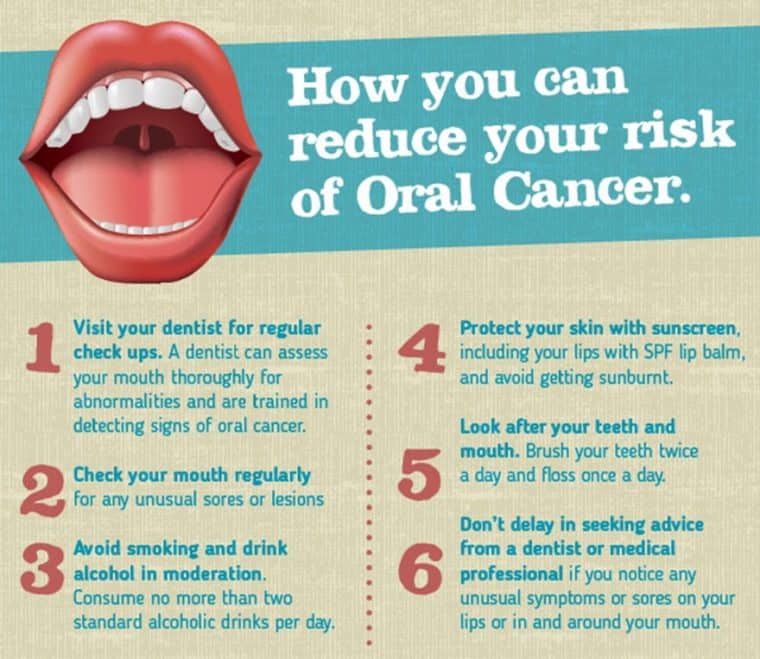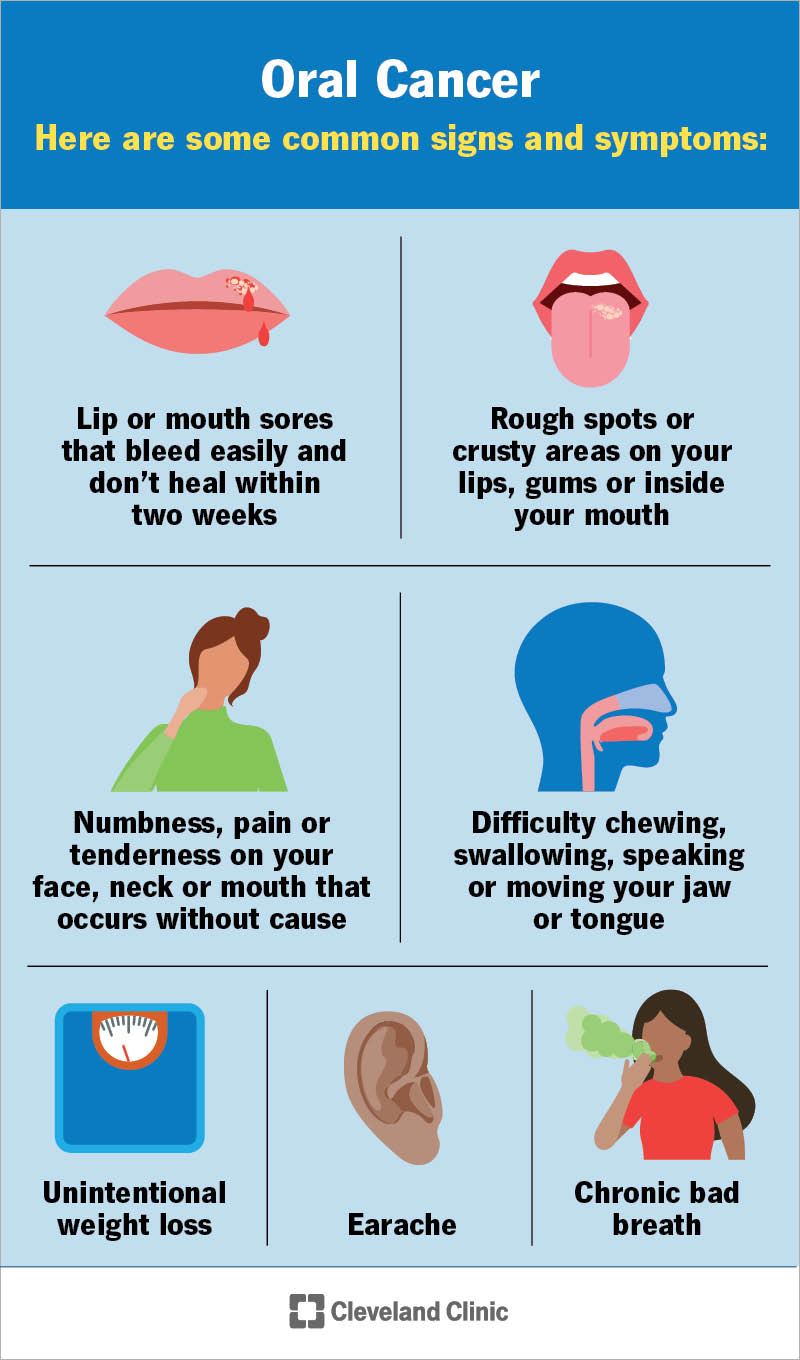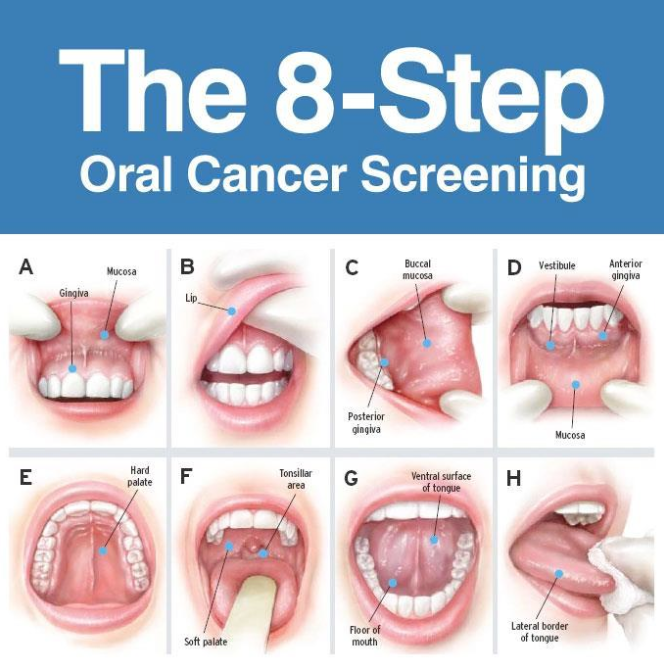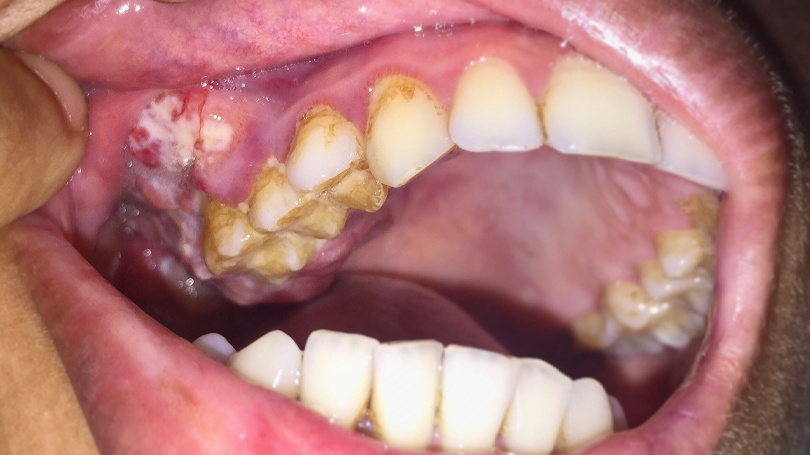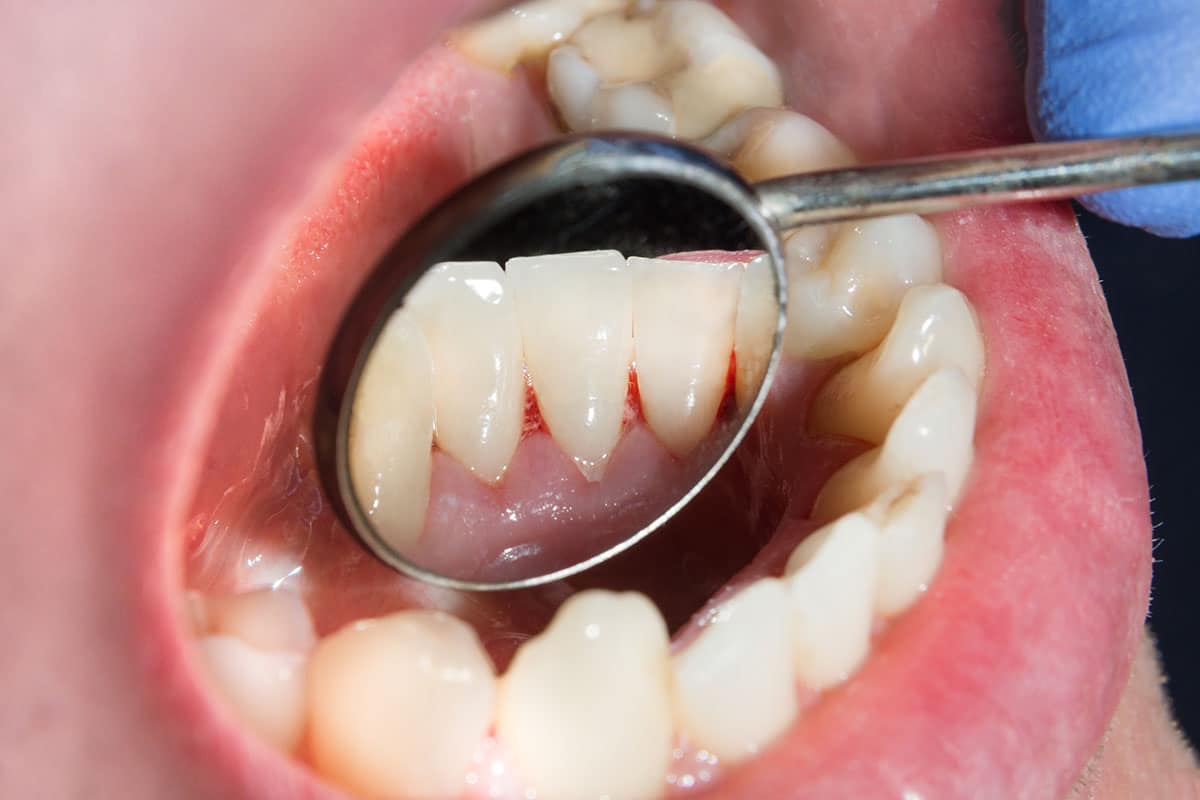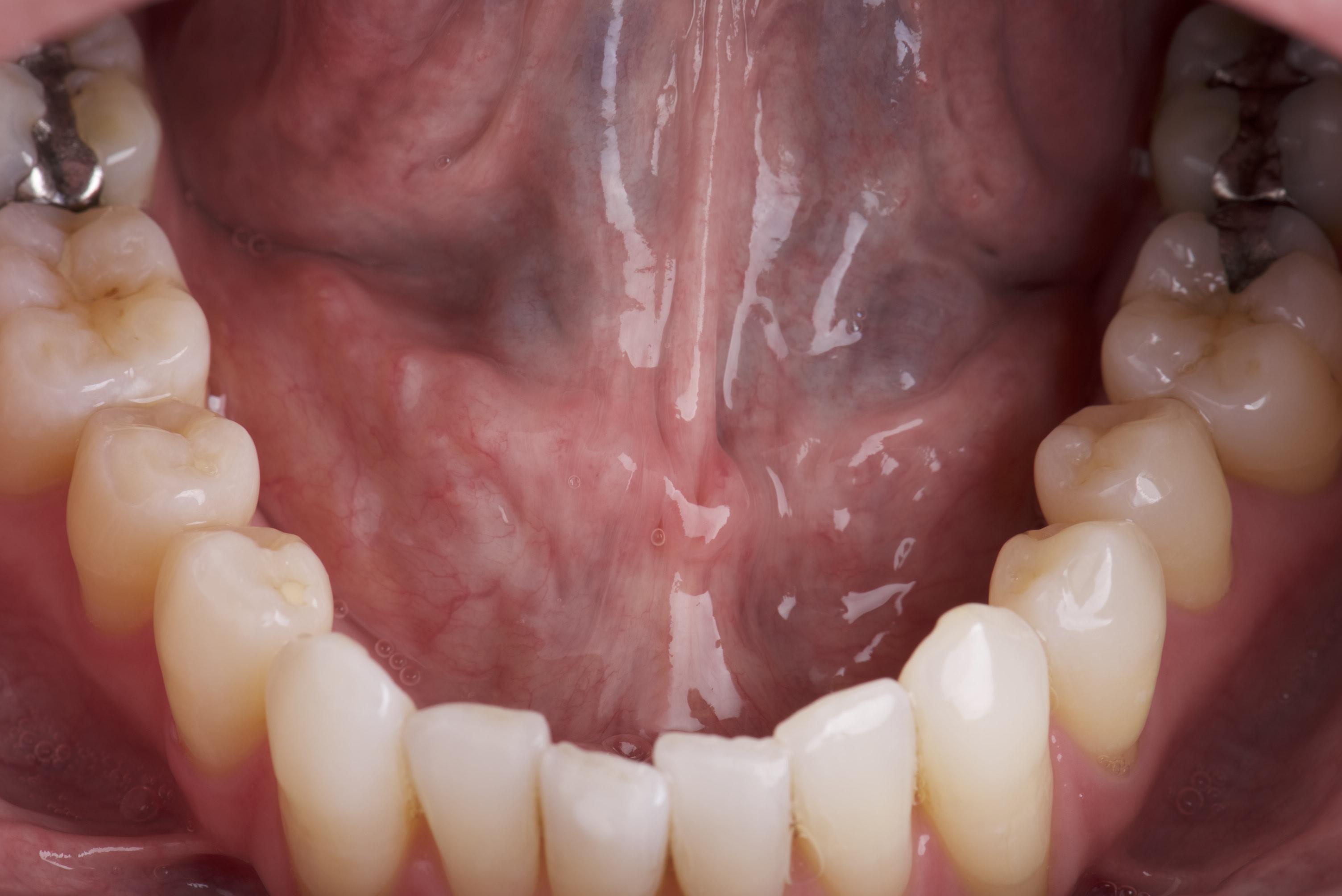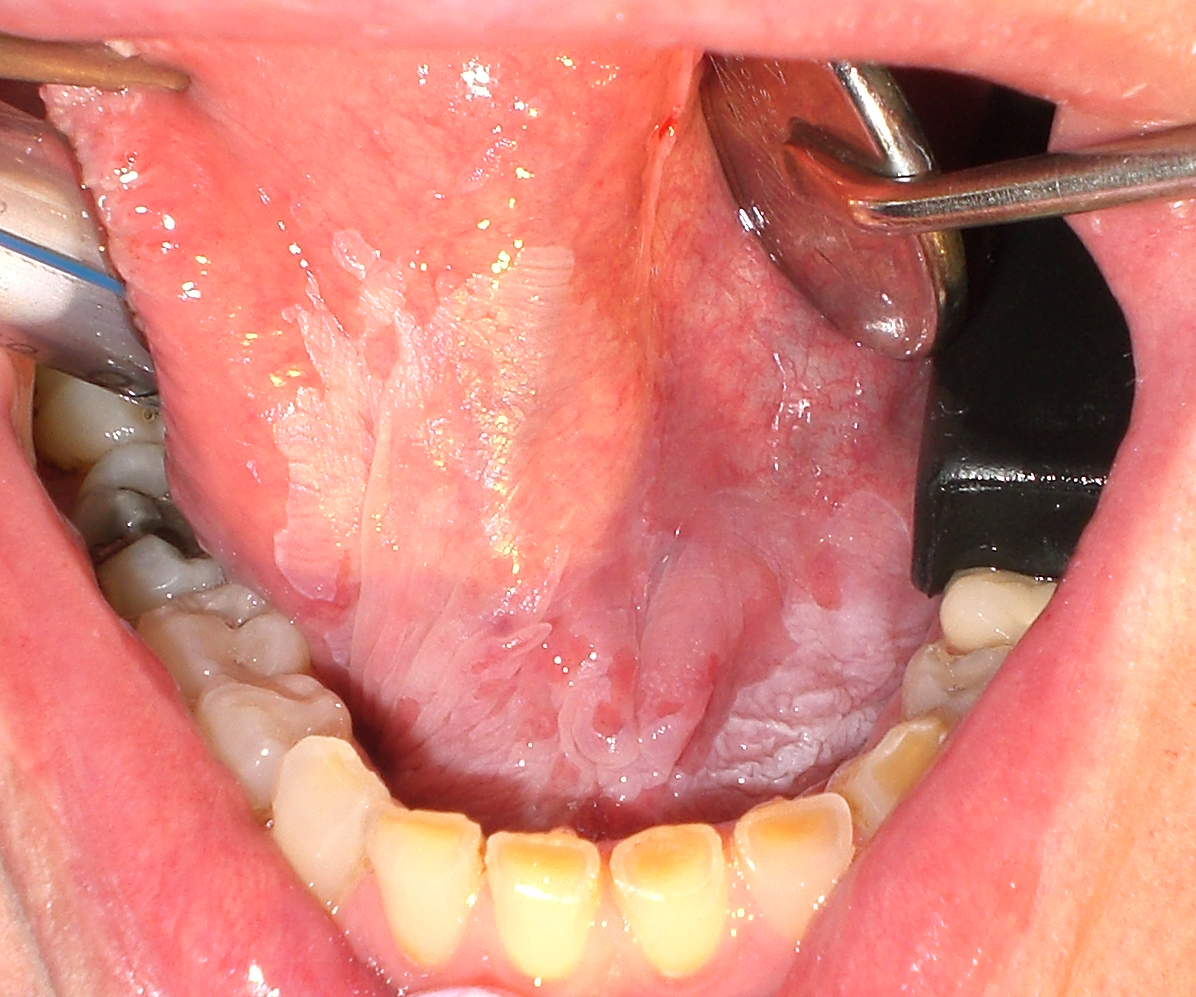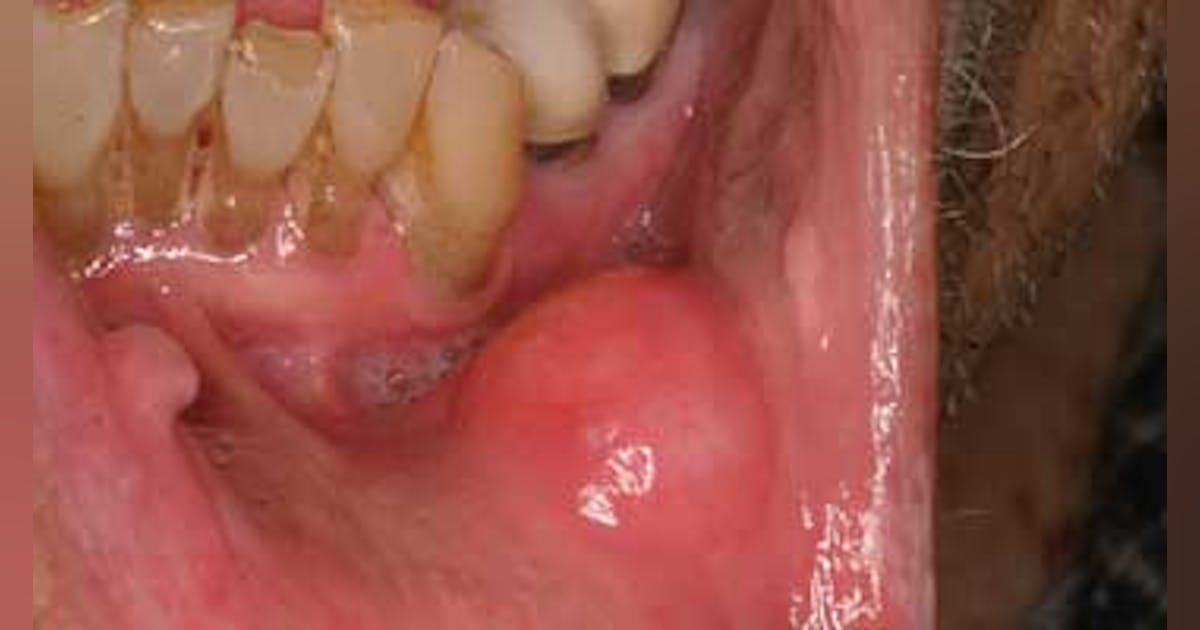Amazing Tips About How To Detect Mouth Cancer
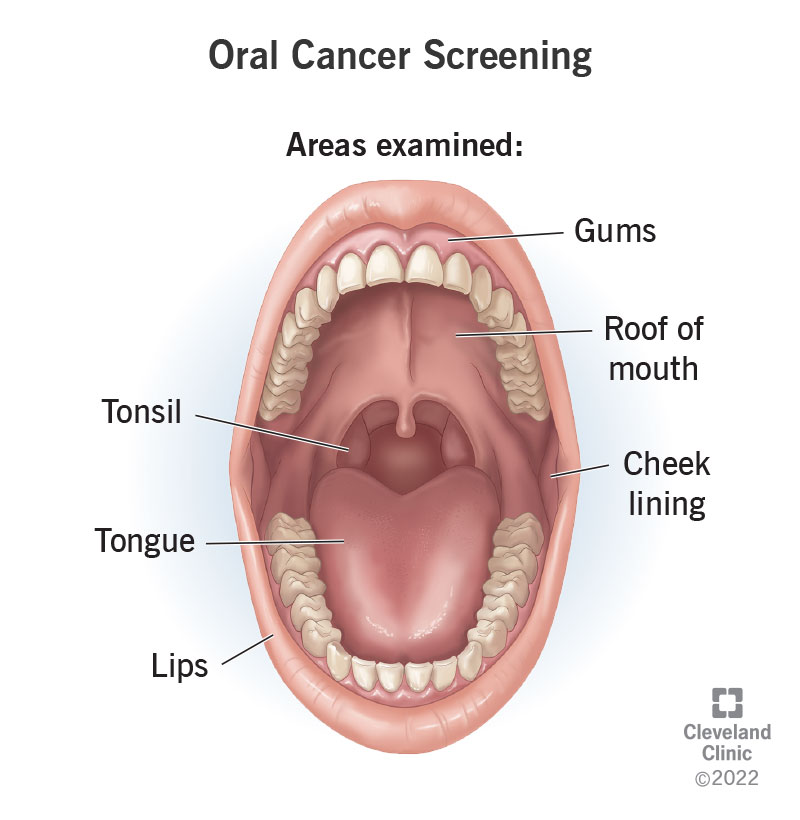
One method uses a dye called toluidine blue.
How to detect mouth cancer. Your dentist will also inspect the tissues in. The first step in identifying oral squamous cell carcinoma is to perform a thorough oral examination. Oral cancer screening is done by examining the inside of your mouth for any signs of cancer.
Barium swallow a barium swallow test may show irregularities. Common signs and symptoms of oral cancer include the following: During the biopsy, your surgeon.
Lesions in the mouth are coated with a blue dye and examined for areas that stain darker,. The following methods may be used: How to check for oral cancer at home 1.
Examine your entire face, checking for any irregularities or changes in the symmetry between the two sides. Another method uses fluorescent light. The three main methods used to perform a biopsy in cases of suspected mouth cancer are:
Along with a clinical exam of the mouth, other tests or procedures designed for diagnosing oral cancer include: Below, we’ll briefly highlight oral cancer screening steps: Signs of oral cancer include the following:
Screening for oral cancer should include a thorough history and physical examination. If the dye is spread over an abnormal area, it will turn a darker blue than. Mouth cancer diagnosis oral tissue biopsy.
An oral tissue biopsy is the first step in diagnosing mouth cancer. Here’s how to check for oral cancer at home: The clinician should visually inspect and palpate the head, neck, oral, and pharyngeal regions.
Persistent pain and sores in the mouth. A punch biopsy is used when the suspected area of tissue is an accessible. Red and white patches inside the mouth, bleeding, loose teeth, pain upon swallowing, a lump in the neck, earache, and a sore on your lip or in your mouth that won't heal are all symptoms of.
Know the signs and symptoms of oral cavity and oropharyngeal (mouth and throat) cancers. If your dentist discovers any signs of mouth cancer or precancerous lesions, he or she may recommend: Sores on the face or mouth that don’t heal within a week or two.
White, red, or any other discolored patches in the mouth. Persistent pain and sores in the mouth a lump or thickening in the cheek a white or red patch on the. Your dentist will examine the interior of your mouth for red or white spots or mouth sores.

